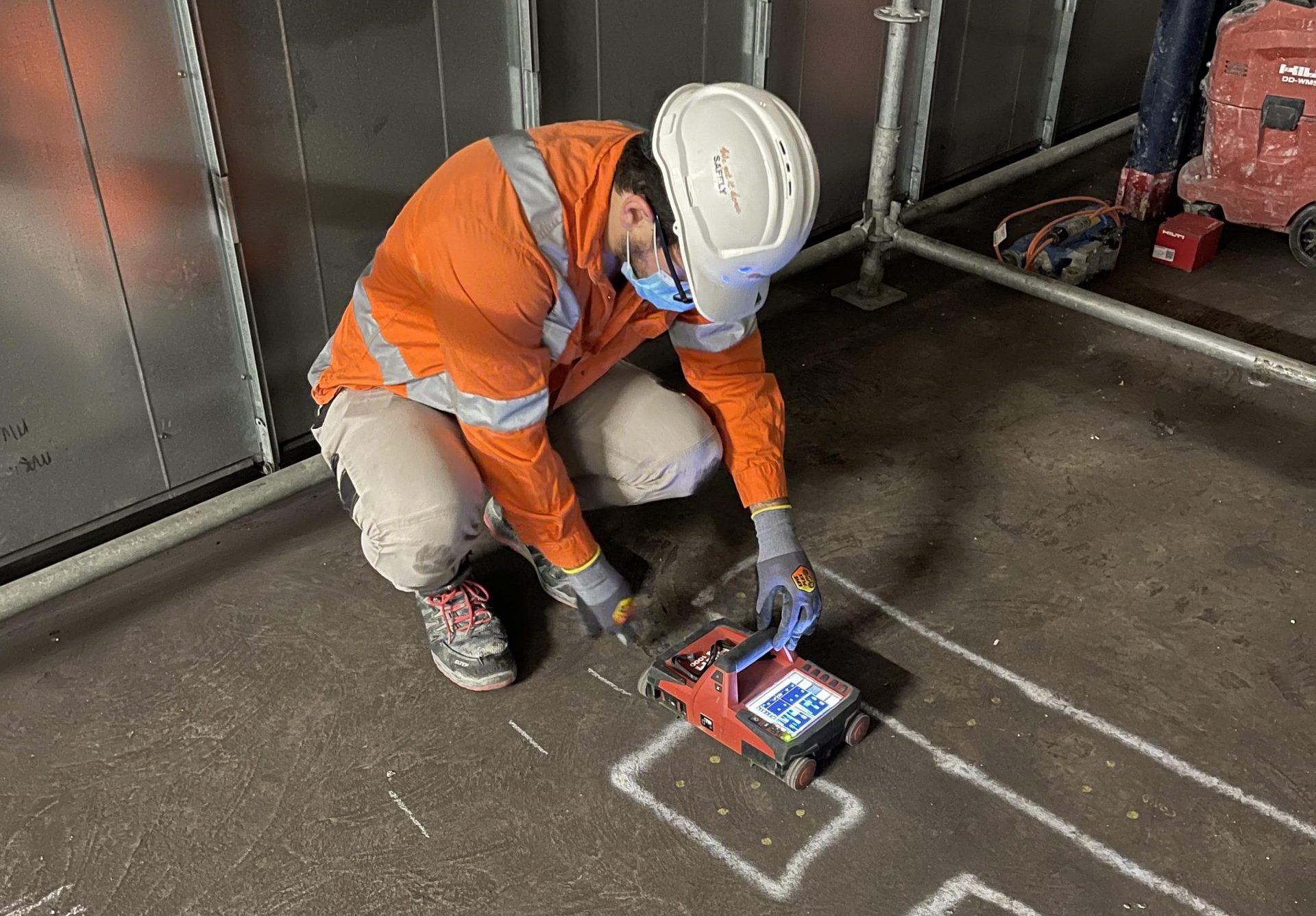RainierGPR Concrete Scanning: Advanced Solutions for Safe Construction
RainierGPR Concrete Scanning: Advanced Solutions for Safe Construction
Blog Article
Exploring the Secret Advantages of Concrete Scanning in Building And Construction Projects
In the realm of modern construction practices, the utilization of concrete scanning innovation has actually emerged as a critical device for making sure job performance and structural integrity. From enhancing security steps to accurately identifying energies hidden underneath the surface, the benefits of concrete scanning are multifaceted. RainierGPR Concrete Scanning.
Enhanced Precaution
Utilizing advanced concrete scanning innovation boosts safety and security actions on building and construction websites by giving accurate detection of prospective risks concealed beneath the surface. This technology allows building and construction teams to identify rebar, channels, post-tension cords, and other obstructions prior to excavation or drilling, dramatically decreasing the risk of mishaps. By identifying these elements specifically, employees can prevent damaging vital architectural parts, thus stopping injuries, hold-ups, and pricey fixings.
Moreover, concrete scanning plays a crucial function in making sure the integrity of existing frameworks during improvements or expansions. By identifying weaknesses, spaces, or damage within concrete elements, designers can address these concerns proactively, improving the total security and longevity of the structure. This proactive method not only alleviates the risk of structural failings however also decreases the capacity for crashes caused by unexpected architectural deficiencies.
Fundamentally, the application of concrete scanning technology offers as a positive precaution that safeguards both building workers and the architectural honesty of structures, eventually contributing to the overall success and effectiveness of building and construction projects. - RainierGPR Concrete Scanning
Accurate Discovery of Utilities
Concrete scanning modern technology promotes exact recognition of underground utilities, improving construction website safety and security and efficiency. Precise discovery of energies is vital in building jobs to stop costly damages, task delays, and most notably, ensure the security of employees and the general public. By using advanced scanning modern technologies such as ground-penetrating radar (GPR) and electromagnetic induction, building teams can map out the area of buried pipes, wires, and various other energies with high degrees of accuracy.

Time and Expense Efficiency

Concrete scanning innovation makes it possible for building teams to properly locate rebar, post-tension cable televisions, and other ingrained things within concrete structures. This exact info helps in staying clear of expensive errors such as accidental damage to important elements throughout drilling, reducing, or coring activities. In addition, by recognizing possible risks beforehand, the demand for pricey repair services or remodel as a result of damages can be decreased, bring about set you back financial savings click this for the task.

Additionally, the ability to quickly and accurately find energies underneath the surface area without causing any type of damages not just saves time but also stops expensive disturbances to existing infrastructure. On the whole, the moment and expense effectiveness advantages of concrete scanning make it an invaluable tool for improving building and construction project monitoring and implementation.
Preservation of Structural Honesty
Maintaining the architectural integrity of structures and facilities is critical in making sure long-lasting stability and security. Concrete scanning plays a critical duty in this conservation process by enabling construction professionals to determine possible hazards to the architectural integrity of a building or facilities prior to they escalate into significant problems. Via making use of advanced scanning technologies such as ground-penetrating radar (GPR) and electro-magnetic induction, building groups can non-invasively examine the problem of concrete frameworks, find rebar, post-tension cables, and various other embedded components, and identify any kind of gaps, splits, or degeneration within the concrete.
Improved Project Preparation
In order to make sure the successful execution of construction tasks, meticulous attention to information and complete planning are essential elements that stem from an extensive understanding of the architectural problems identified via concrete scanning. Boosted task preparation, assisted in by concrete scanning, allows building and construction teams to preemptively attend to prospective difficulties, assign sources extra successfully, and develop realistic timelines. By properly identifying the place of rebar, post-tension cables, check this site out and other embedded things within concrete structures, project managers can establish much more exact construction plans that minimize the danger of pricey errors or hold-ups. Furthermore, the data obtained from concrete scanning allows stakeholders to make informed decisions relating to architectural modifications, remodellings, or expansions, leading to smoother job transitions and improved total task outcomes. Inevitably, including concrete scanning right into the project preparation stage enhances sychronisation among group members, cultivates aggressive problem-solving, and adds to the successful distribution of construction tasks within budget plan and timetable restrictions.
Verdict
In final thought, concrete scanning offers countless advantages in building jobs. By enhancing useful site precaution, precisely identifying utilities, enhancing time and price performance, preserving structural stability, and helping in project planning, concrete scanning proves to be a necessary device for successful task implementation. Its ability to alleviate risks, boost effectiveness, and make certain task integrity makes it an indispensable property for building experts.
In the realm of contemporary construction practices, the application of concrete scanning technology has emerged as a critical device for ensuring task effectiveness and architectural stability.Concrete scanning technology allows building and construction groups to accurately locate rebar, post-tension cables, and other embedded items within concrete frameworks. Via the use of sophisticated scanning modern technologies such as ground-penetrating radar (GPR) and electromagnetic induction, construction teams can non-invasively analyze the problem of concrete structures, find rebar, post-tension cable televisions, and various other embedded elements, and identify any kind of spaces, splits, or degeneration within the concrete.
In order to ensure the effective implementation of construction projects, careful focus to detail and comprehensive planning are vital elements that stem from a comprehensive understanding of the structural conditions determined via concrete scanning. Ultimately, integrating concrete scanning into the job preparation phase boosts control among group members, cultivates aggressive problem-solving, and adds to the effective shipment of building and construction projects within budget plan and routine restraints.
Report this page